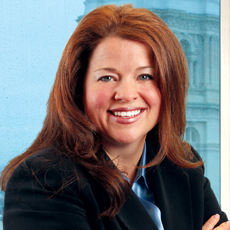
Lately, the topic of “superbugs” in healthcare facilities is dominating the media — with sources ranging from The Wall Street Journal to McKnight’s covering the epidemic. It’s easy to see why this has become a widely discussed issue, with the Center for Disease Control and Prevention estimating that at least two million Americans become infected with superbugs annually.
Superbugs are defined as a strain of infectious bacteria that have become resistant to antibiotic drugs. Considering almost everyone has received antibiotic medical treatment at least once in their lifetime, this statistic isn’t at all surprising — especially as antibiotics have been in use since the 1940s and it’s only natural that these infectious organisms have adapted over time.
Although studies by the CDC have confirmed that the majority of superbug cases occur within the general community, there is a spotlight on the cases that occur within hospitals and long-term care facilities. Unfortunately, an increased number of diagnosed superbug cases do occur in these types of healthcare environments.
However, this doesn’t mean that the healthcare provider is necessary responsible — but rather, the heightened number of cases is a result of individuals already having weakened immune systems and experiencing other chronic illnesses. For example, the CDC found that nearly 20% of long-term care providers had at least one patient present with an antibiotic resistant infection in 2012. In addition, there are naturally more identified superbugs within healthcare facilities, as the general public goes to these institutions to be diagnosed and to be treated.
This often leaves healthcare organizations wondering what can be done to prevent superbug outbreaks. The answer is, unfortunately, very little beyond traditional prevention control practices. Fighting superbugs and the dangerous infections they cause must be a coordinated effort on behalf of all facets of the healthcare industry, from providers and clinical researchers to the pharmaceutical drug market. The first step to reducing these cases involves not only preventing the spread of resistance, but also improving diagnostic testing, monitoring the use of prescribed antibiotics and furthering the development of new antibiotic treatments.
What healthcare providers can control is how they respond and the steps they take to prevent further cross contamination, should their skilled nursing facility be faced with an outbreak. In addition to ensuring compliance with their state’s individual health department, it’s critically important to stay up to date on CDC guidelines. Currently, it is recommended that the following steps be taken once a resistant antibiotic is detected within your facility:
• Clinical staff and lab technicians should first be taught to properly identify superbug infections. As soon as the antibiotic resistant infection is detected, facility executives should be immediately notified.
• All lab technicians, administrators and other required reporters should immediately notify the National Healthcare Safety Network, along with any other necessary healthcare organizations.
• Clinical staff should be updated regarding which superbug infections are present in the organization.
• To prevent the infection from spreading throughout the facility, staff should follow universal precautions. This includes isolation and cohorting, where appropriate.
• If a patient is being transferred, alert and brief the receiving facility of the situation at hand.
To ensure the safety of residents and prevent a superbug case from quickly becoming an outbreak in your facility, following the above guidelines is crucial. Facility executives should strictly enforce CDC procedures for infection detection, tracking and reporting. In addition, staying abreast of resistant trends in your facility and industry threats can help you prepare for specific superbug occurrences and to effectively train your staff on the proper responses.
Bette McNee, RN, NHA, is a clinical risk management consultant at Graham Company.



